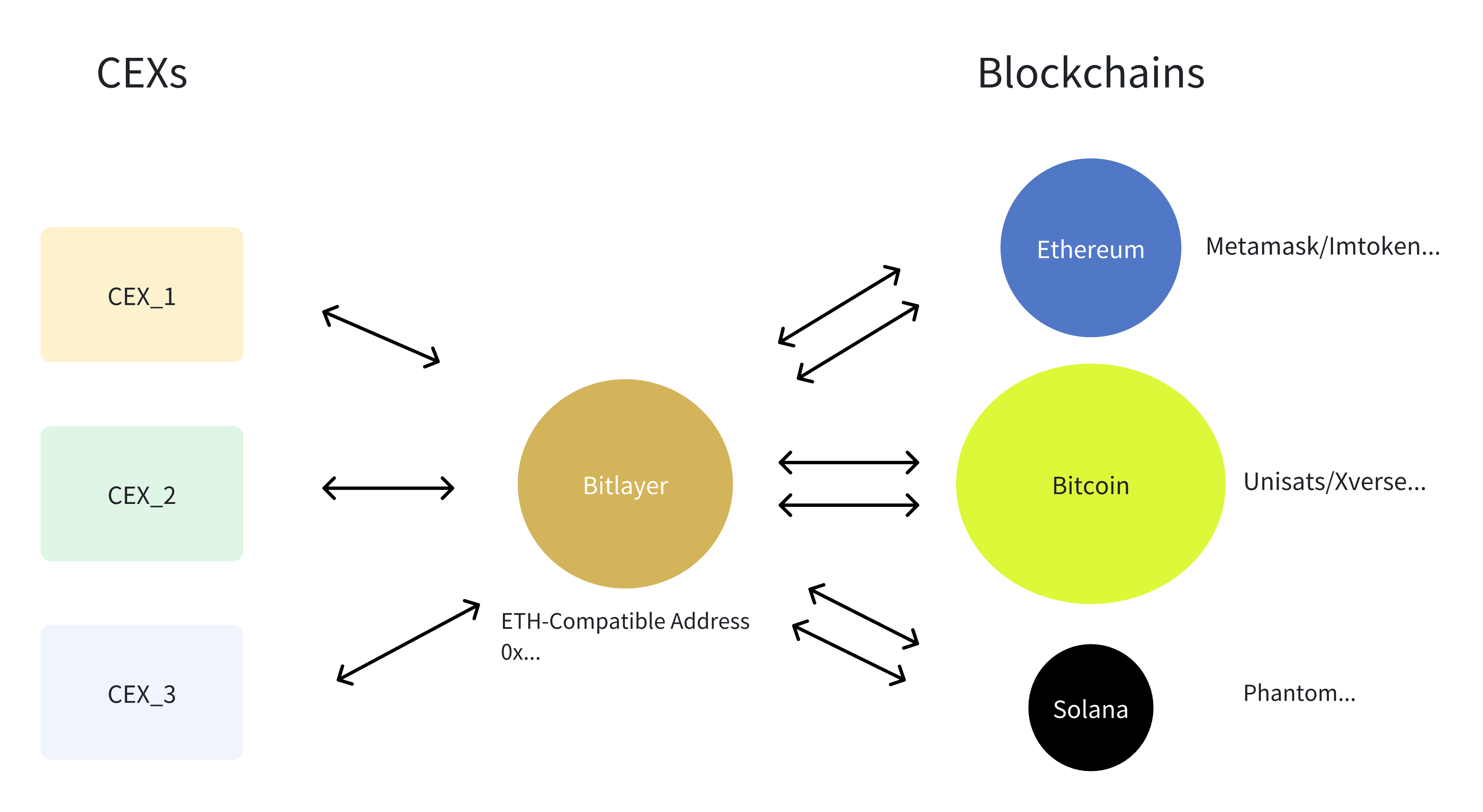1. Official cross-chain bridge: Safe and reliable, directly connecting mainstream chains
Bitlayer officially provides several cross-chain bridges that directly connect Bitcoin and EVM-compatible chains (like Ethereum, Polygon, etc.), but currently, third-party direct calls are not supported (meaning you cannot indirectly use these bridges through other platforms).
(1)Bitlayer to other blockchains (official bridge)
You can transfer assets from Bitlayer to other blockchains (like Ethereum, Solana) through the official bridge; the specific entry point can be found here. However, currently, the official bridge focuses more on 'one-way' or specific scenarios of asset transfer, and more features may be opened in the future.
(2)Bitcoin (BTC) to Bitlayer
This is one of the core scenarios of Bitlayer — allowing Bitcoin to enjoy Layer 2 scalability and ecosystem play! Currently, there are two technical solutions:
Mainnet-V1 (Bitlayer PoS): The Bitlayer team is collaborating with several MPC (Multi-Party Computation) platforms, such as Coinbase (a globally recognized exchange) and Sinohope (a Hong Kong-listed company, code 1611), using their custodial technology to ensure the security of Bitcoin assets. Simply put, it is like using a large institution's 'safe' to help you store BTC, ensuring that the cross-chain process is reliable; Mainnet-V2 & V3 (Bitcoin finality solution): The team is developing a 'trustless cross-chain bridge' based on BitVM technology (which means no need to trust any intermediaries, relying entirely on cryptography for security). BitVM is a Bitcoin smart contract extension solution proposed by the Solana ecosystem, enabling the Bitcoin network to implement more complex logic. This bridge is still under development (WIP=Work In Progress), but once launched, cross-chain from Bitcoin to Bitlayer will be safer and more decentralized!
(3)EVM chains (like Ethereum) to Bitlayer
The Bitlayer team has built a trustless cross-chain bridge based on Chainlink CCIP (Cross-Chain Interoperability Protocol). Chainlink is the 'oracle king' of the blockchain world, and its CCIP protocol ensures the accurate transmission of cross-chain information. Users can check the status of cross-chain channels (for example, whether the cross-chain was successful and if the assets have arrived) through the CCIP browser.
2. Third-party cross-chain bridges: More choices, flexible interoperability
In addition to the official bridge, Bitlayer also supports a large number of third-party cross-chain bridges (such as Anyswap, Multichain, etc.), which may connect to more niche blockchains or provide different cross-chain experiences (such as lower fees, faster speeds). You can find all the third-party bridges that support Bitlayer here and choose based on your needs!
3. Bitlayer to centralized exchanges (CEX): Directly 'move' assets from the exchange to Bitlayer
Bitlayer also thoughtfully supports transferring assets from centralized exchanges (like Binance, Coinbase) directly to Bitlayer's EVM-compatible wallet address through cross-chain bridges. Previously, if you wanted to withdraw BTC or ETH from an exchange to Bitlayer, you might have to transfer it to your own wallet first and then manually cross-chain; now with this feature, you can directly transfer from the exchange to Bitlayer in one step, seamlessly connecting to the efficient experience of Layer 2!




